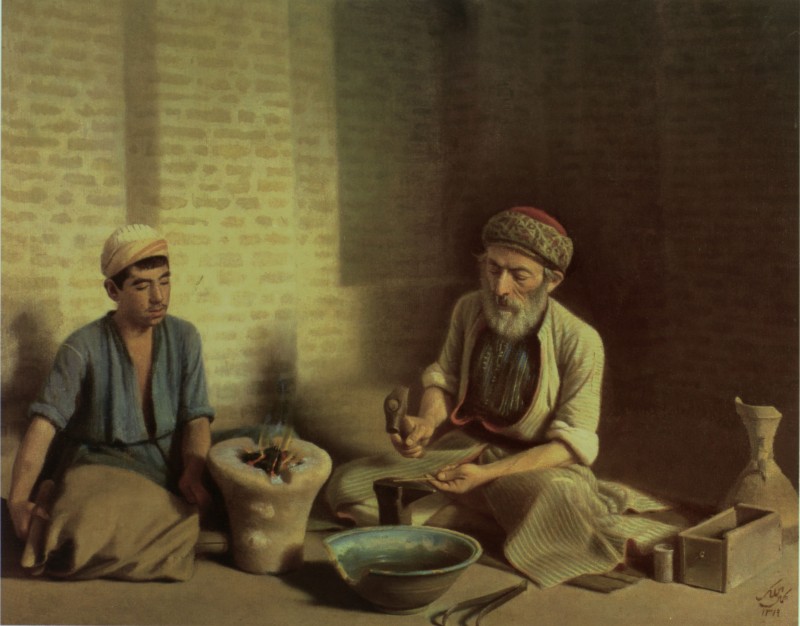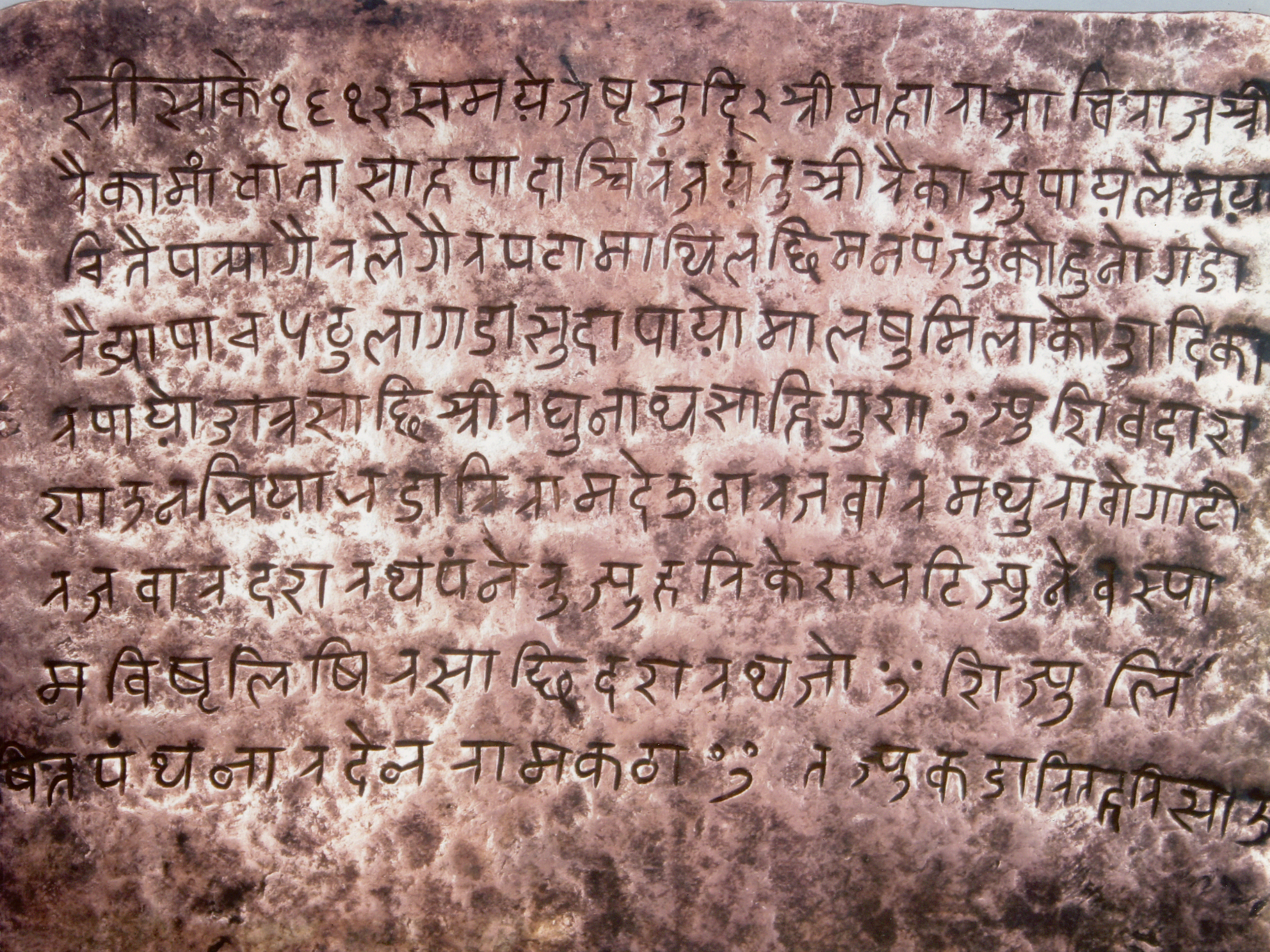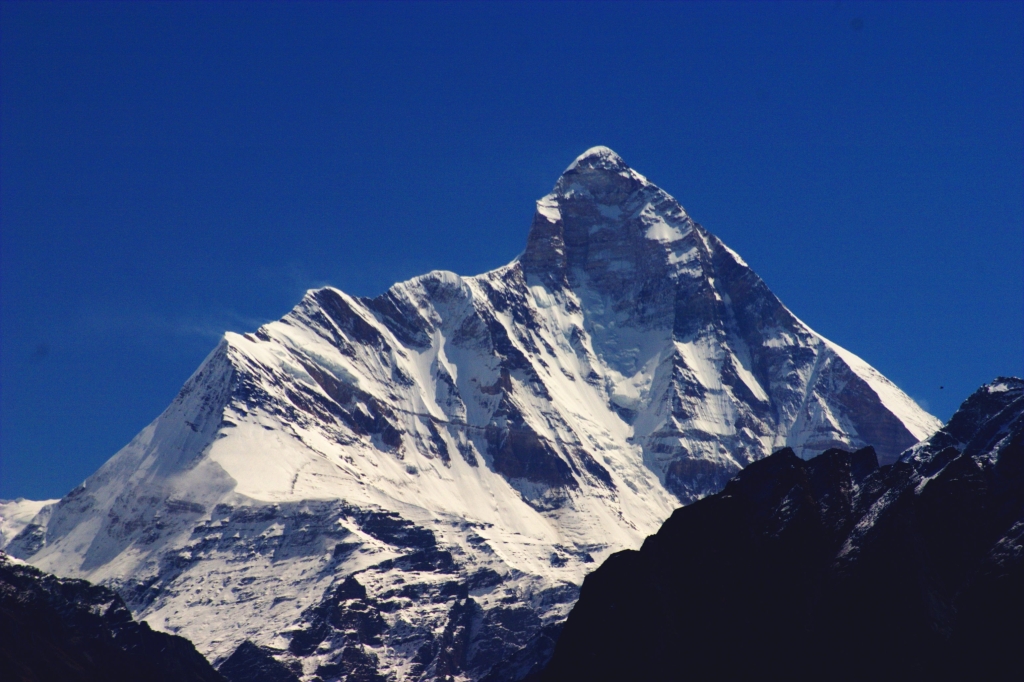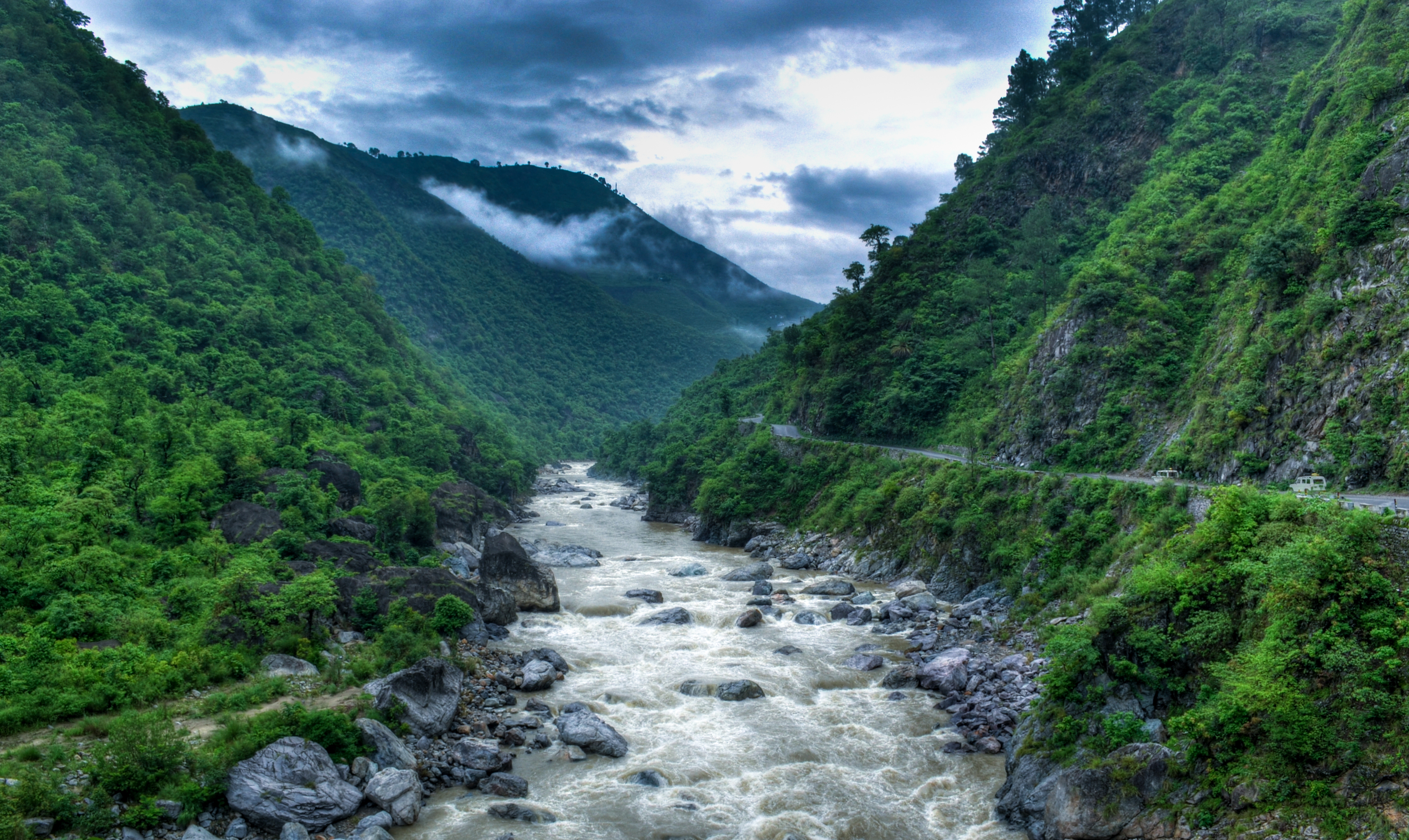|
Bulak
A bulak or bulaki is an ornament or jewellery item that is a part of traditional attire of the Pahari people in Uttarakhand, India. Design Bulak is a type of nose ring worn at the nasal septum. It is usually worn by married women and is generally made out of 10-12 gram pure gold. It is peculiarly designed by the skillful goldsmiths who carve intricate motif designs on it. The average length of a bulak can be up to 4–5 cm along with a hook-like end, so that it could be worn easily. The bottom part of a bulak has intricate carving on it and the pearls are in a conical shape giving it an elegant look. The hook at which the bulaq is worn, resembles the inverted 'U' of the English alphabet. Other names for bulak * Bulankh (in Garhwali and Himachali) * Besar (in Kumaoni) * Bulaki (in Nepali) Region In former years, it was adorned by the women of Garhwal, Kumaon and of Jaunsar belt. But nowadays the trend for bulak is diminishing and considered an old fashion. Apart from ... [...More Info...] [...Related Items...] OR: [Wikipedia] [Google] [Baidu] |
Nose Piercing
Nose piercing is the piercing of the skin or cartilage which forms any part of the nose, normally for the purpose of wearing jewelry, called a nose-jewel. Among the different varieties of nose piercings, the nostril piercing is the most common. Nostril piercing Nostril piercing is a body piercing practice for the purpose of wearing jewelry, much like ear piercing, which is most primarily and prominently associated with Indian culture and fashion since classical times, and found commonly in India, Pakistan, Bangladesh, Sri Lanka, Nepal and other SWANA countries (specifically Berber and Beja communities, as well as Iran), and Europe, particularly Poland. Nostril piercing is also part of traditional Australian Aboriginal culture and the culture of the Ilocano, a tribe in the Philippines. Since the introduction and diffusion of Indian fashion and culture in the 1960s, punks and subsequent youth cultures of the 1980s and 1990s adopted nostril piercing. Today, nostril piercing i ... [...More Info...] [...Related Items...] OR: [Wikipedia] [Google] [Baidu] |
Jewellery
Jewellery ( UK) or jewelry ( U.S.) consists of decorative items worn for personal adornment, such as brooches, rings, necklaces, earrings, pendants, bracelets, and cufflinks. Jewellery may be attached to the body or the clothes. From a western perspective, the term is restricted to durable ornaments, excluding flowers for example. For many centuries metal such as gold often combined with gemstones, has been the normal material for jewellery, but other materials such as glass, shells and other plant materials may be used. Jewellery is one of the oldest types of archaeological artefact – with 100,000-year-old beads made from '' Nassarius'' shells thought to be the oldest known jewellery.Study reveals 'oldest jewellery' , '' |
Uttarakhand
Uttarakhand ( , or ; , ), also known as Uttaranchal ( ; List of renamed places in India, the official name until 2007), is a States and union territories of India, state in the North India, northern part of India. It is often referred to as the "Devbhumi" (literally 'Land of the Gods') due to its religious significance and numerous Hindu temples and Hindu pilgrimage sites in India, pilgrimage centres found throughout the state. Uttarakhand is known for the natural environment of the Himalayas, the Bhabar and the Terai regions. It borders the Tibet Autonomous Region of China to the north; the Sudurpashchim Province of Nepal to the east; the Indian states of Uttar Pradesh to the south and Himachal Pradesh to the west and north-west. The state is divided into two divisions, Garhwal division, Garhwal and Kumaon division, Kumaon, with a total of List of districts of Uttarakhand, 13 districts. The winter capital of Uttarakhand is Dehradun, the largest city of the state, which is a ra ... [...More Info...] [...Related Items...] OR: [Wikipedia] [Google] [Baidu] |
Goldsmith
A goldsmith is a metalworker who specializes in working with gold and other precious metals. Nowadays they mainly specialize in jewelry-making but historically, goldsmiths have also made silverware, platters, goblets, decorative and serviceable utensils, and ceremonial or religious items. Goldsmiths must be skilled in forming metal through filing, soldering, sawing, forging, casting, and polishing. The trade has very often included jewelry-making skills, as well as the very similar skills of the silversmith. Traditionally, these skills had been passed along through apprenticeships; more recently jewelry arts schools, specializing in teaching goldsmithing and a multitude of skills falling under the jewelry arts umbrella, are available. Many universities and junior colleges also offer goldsmithing, silversmithing, and metal arts fabrication as a part of their fine arts curriculum. Gold Compared to other metals, gold is malleable, ductile, rare, and it is the only ... [...More Info...] [...Related Items...] OR: [Wikipedia] [Google] [Baidu] |
Garhwali Language
Garhwali (, , in native pronunciation) is an Indo-Aryan language of the Central Pahari subgroup. It is primarily spoken by over 2.5 million Garhwali people in the Garhwal region of the northern Indian state of Uttarakhand in the Indian Himalayas. Garhwali has a number of regional dialects. It is not an endangered language ('' Ethnologue'' lists it as "vigorous"), it is nonetheless designated as "vulnerable" in UNESCO's ''Atlas of the World's Languages in Danger'', which indicates that the language requires consistent conservation efforts. Geographical distribution Garhwali is spoken primarily by people in Tehri Garhwal, Pauri Garhwal, Uttarkashi, Chamoli, Rudraprayag and Dehradun districts of Garhwal division in the state of Uttarakhand. Garhwali is also spoken by Garhwali migrants to other parts of India including Himachal Pradesh, Delhi, Haryana, Punjab, Uttar Pradesh. According to various estimates, there are at least 3.5 million Garhwali migrants living ... [...More Info...] [...Related Items...] OR: [Wikipedia] [Google] [Baidu] |
Himachali Language
The Western Pahari languages are a group of Northern Indo-Aryan languages that are spoken in the state of Himachal Pradesh, Jammu region of Jammu and Kashmir and parts of Uttarakhand and Punjab Languages The following lists the languages classified as belonging to Western Pahari, with the provisional grouping used in Glottolog 4.1: :Jaunsari :Nuclear Himachali: :: Hinduri :: Pahari Kinnauri :: Kullu Pahari :: Mahasu Pahari ::Sirmauri :Mandeali :Kangric-Chamealic-Bhattiyali: ::Chamealic: :::Bhadarwahi ::: Churahi ::: Bhattiyali :::Bilaspuri :::Chambeali ::: Gaddi :::Pangwali ::Kangri-Dogri: :::Dogri :::Kangri These languages are a dialect chain, and neighbouring varieties may be mutually intelligible. Some Western Pahari languages have occasionally been regarded as dialects of either Dogri, Hindustani or Punjabi. Some Western Pahari languages, notably Dogri and Kangri, are tonal, like their close relative Punjabi but unlike most other Indic languages. Dogri has been an offi ... [...More Info...] [...Related Items...] OR: [Wikipedia] [Google] [Baidu] |
Kumaoni Language
Kumaoni (; ) is an Indo-Aryan language spoken by over two million people of the Kumaon region of the state of Uttarakhand in northern India and parts of Doti region in Western Nepal. As per 1961 survey there were 1,030,254 Kumaoni speakers in India. The number of speakers increased to 2.2 million in 2011. Kumaoni is not endangered but UNESCO's ''Atlas of the World's Languages in Danger'' designates it as a language in the ''unsafe'' category, meaning it requires consistent conservation efforts. Script Kumaoni uses the Devanagari script. Geographic distribution and dialects There are several dialects spoken in the Kumaon region. There is not single accepted method of dividing up the dialects of Kumaoni. Broadly speaking, Kali (or Central) Kumaoni is spoken in Almora and northern Nainital. North-eastern Kumaoni is spoken in Pithoragarh. South-eastern Kumaoni is spoken in South-eastern Nainital. Western Kumaoni is spoken west of Almora and Nainital. More specifically: * Jo ... [...More Info...] [...Related Items...] OR: [Wikipedia] [Google] [Baidu] |
Nepali Language
Nepali (; , ) is an Indo-Aryan language native to the Himalayas region of South Asia. It is the official, and most widely spoken, language of Nepal, where it also serves as a '' lingua franca''. Nepali has official status in the Indian state of Sikkim and in the Gorkhaland Territorial Administration of West Bengal. It is spoken by about a quarter of Bhutan's population. Nepali also has a significant number of speakers in the states of Arunachal Pradesh, Assam, Himachal Pradesh, Manipur, Meghalaya, Mizoram and Uttarakhand. In Myanmar it is spoken by the Burmese Gurkhas. The Nepali diaspora in the Middle East, Brunei, Australia and worldwide also use the language. Nepali is spoken by approximately 16 million native speakers and another 9 million as a second language. Nepali is commonly classified within the Eastern Pahari group of the Northern zone of Indo-Aryan. The language originated from the Sinja Valley, Karnali Province then the capital city of the Khasa Ki ... [...More Info...] [...Related Items...] OR: [Wikipedia] [Google] [Baidu] |
Garhwal Division
Garhwal (IPA: /ɡəɽʋːɔɭ/) is one of the two administrative divisions of the Indian state of Uttarakhand. Lying in the Himalayas, it is bounded on the north by Tibet, on the east by Kumaon, on the south by Uttar Pradesh state, and on the northwest by Himachal Pradesh state. It includes the districts of Chamoli, Dehradun, Haridwar, Pauri Garhwal, Rudraprayag, Tehri Garhwal, and Uttarkashi. The people of Garhwal are known as Garhwali and speak the Garhwali language. The administrative center for Garhwal division is the town of Pauri. The Divisional Commissioner is the administrative head of the Division, and is a senior Indian Administrative Service officer. As the administrative head of the division, the Commissioner is overall incharge of the 7 districts in the Garhwal region of Uttarakhand, and is aided in his duties by an additional commissioner and the district magistrates. Sushil Kumar is the divisional commissioner of the Garhwal Division since December 2021. History ... [...More Info...] [...Related Items...] OR: [Wikipedia] [Google] [Baidu] |
Kumaon Division
Kumaon (; Kumaoni: ''Kumāū''; ; historically romanized as KemāonJames Prinsep (Editor)John McClelland ) is a revenue and administrative division in the Indian State of Uttarakhand. It spans over the eastern half of the state and is bounded on the north by Tibet, on the east by Nepal, on the south by the state of Uttar Pradesh, and on the west by Garhwal. Kumaon comprises six districts of the state: Almora, Bageshwar, Champawat, Nainital, Pithoragarh and Udham Singh Nagar. Historically known as Manaskhand and then Kurmanchal, the Kumaon region has been ruled by several Hindu dynasties over the course of history; most notably the Katyuris and the Chands. The Kumaon division was established in 1816, when the British reclaimed this region from the Gorkhas, who had annexed the erstwhile Kingdom of Kumaon in 1790. It was formed into a division of what was then called Ceded and Conquered Provinces, later known as United Provinces. In independent India the state was calle ... [...More Info...] [...Related Items...] OR: [Wikipedia] [Google] [Baidu] |
Jaunsar-Bawar
Jaunsar-Bawar is a hilly region in Garhwal division of Uttarakhand, northern India. It is located in the north-west of Dehradun district, along the border with the state of Himachal Pradesh. Ethnically, Jaunsar-Bawar comprises two regions, inhabited by the two predominant groups: Jaunsar, the lower half, while the snow-clad upper region is called Bawar, which includes, the 'Kharamba peak' (). Geographically adjacent, they are not very different from each other. The Bawar lies in the upper regions of the area. They are a unique community because they have remained cut off from the external world for centuries, leading to the retention of their unique culture and traditions, which have attracted historians, anthropologist and studies in ethnopharmacology to this region for over a century. There is a significant cultural shift from other people of Garhwal, living close by. Jaunsar-Bawar region The Jaunsar-Bawar region, is a valley, spread over 1002 km2 and 398 villages(vil ... [...More Info...] [...Related Items...] OR: [Wikipedia] [Google] [Baidu] |
_-_TIMEA.jpg)





